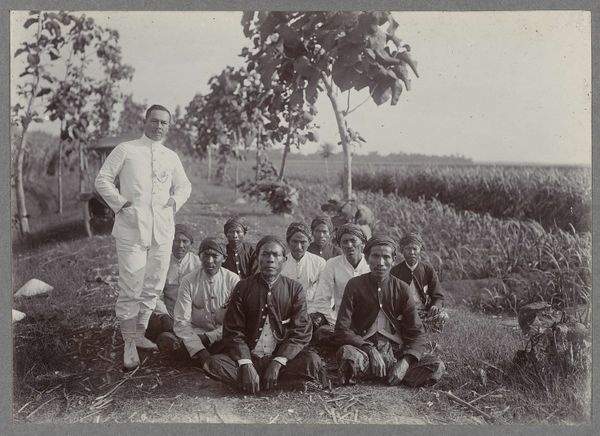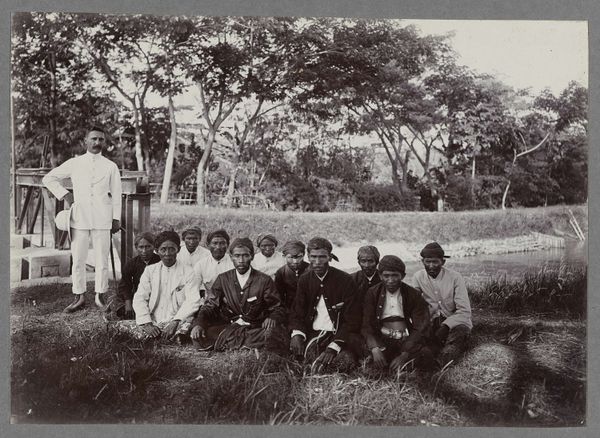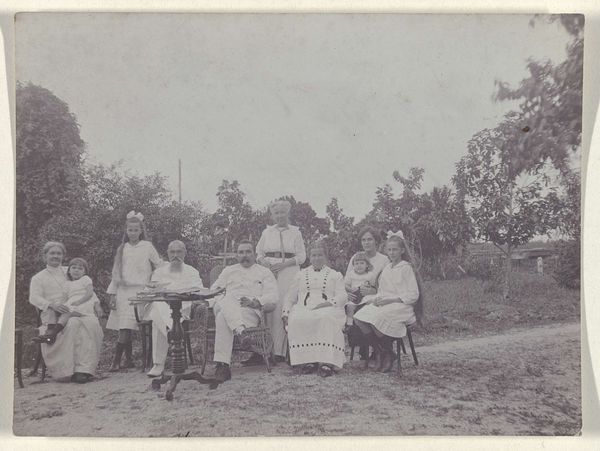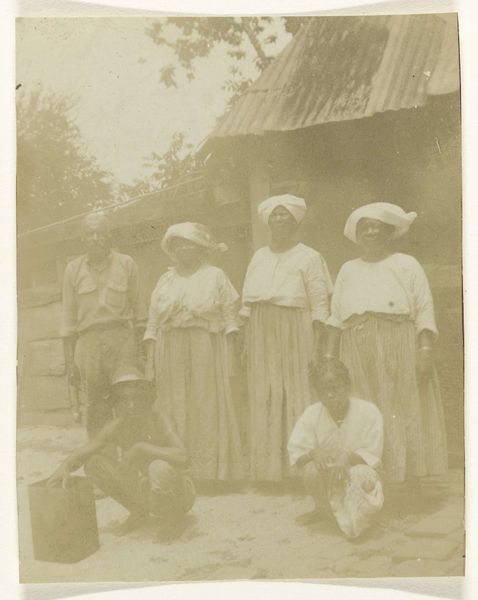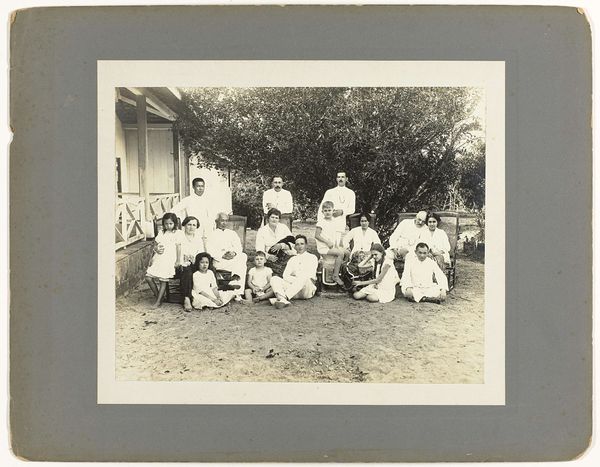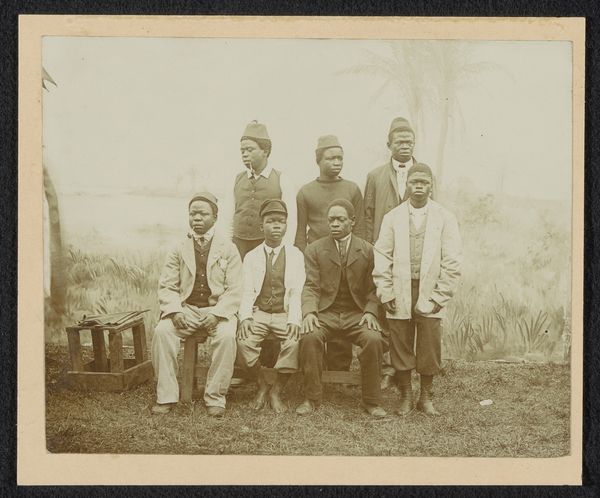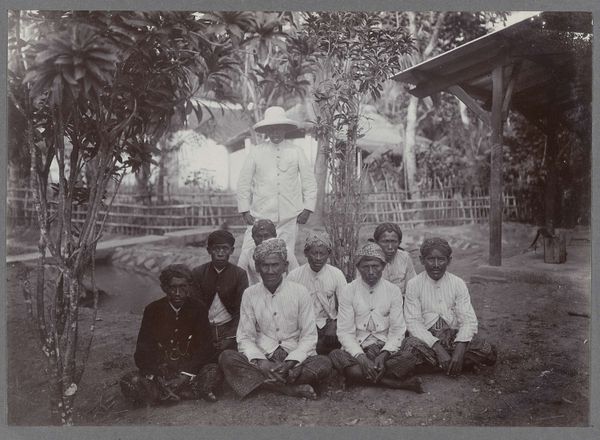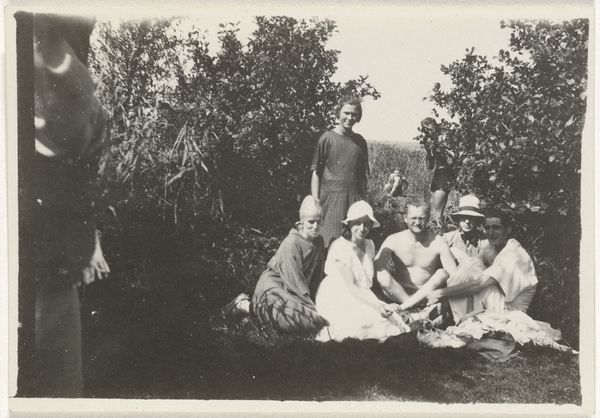
photography, gelatin-silver-print
#
portrait
#
asian-art
#
archive photography
#
photography
#
historical photography
#
group-portraits
#
gelatin-silver-print
#
realism
Dimensions: height 123 mm, width 173 mm
Copyright: Rijks Museum: Open Domain
Curator: Here we have a gelatin-silver print from the early 1900s, entitled "Opzichter met werknemers," which translates to "Overseer with Employees." Editor: It feels... staged. The way the men are seated, the overseer standing rigidly behind them. The contrast is pretty stark, isn’t it? Curator: Precisely. This photographic print really visualizes the socio-economic hierarchies inherent to the colonial context in which it was taken. The Dutch overseer, dressed in Western attire, stands erect, quite detached, whereas the local workers are seated, quite literally on the ground. Editor: The railway stretching into the distance—does that symbolize progress, or maybe something else? It almost looks like it divides the world. On one side, you have cultivation, farmland… on the other, a track leading who-knows-where. It creates such a great sense of space. Curator: The railroad serves both. Symbolically it represents resource extraction and transport from colonized lands. Consider that railways during this period were essential for colonial powers to extract resources efficiently. Also, photographs such as this played a role in shaping the Dutch public perception. Editor: There’s an air of forced civility that makes me question the narrative here. Like, is this photo celebrating progress or documenting power? It is so somber. Curator: It's a visual argument. Who holds the authority, who benefits from development, who is obscured in these narratives. Early photography in Southeast Asia carries all that weight. Editor: Photography is never neutral is it? Looking closer, you see more faces than first thought—lives compacted together into that single, enduring image. Curator: Absolutely. Think of these images circulated in albums, journals, and personal archives, reinforcing a specific colonial perspective on reality. What you notice becomes canon. Editor: It all circles back to the photographer’s lens, the viewpoint we are offered. "Opzichter met werknemers" speaks volumes even without a caption. Thank you for sharing some helpful cultural context. Curator: The work helps us to re-examine images with a more critical eye, seeking the multiple layers embedded in its very composition.
Comments
No comments
Be the first to comment and join the conversation on the ultimate creative platform.
